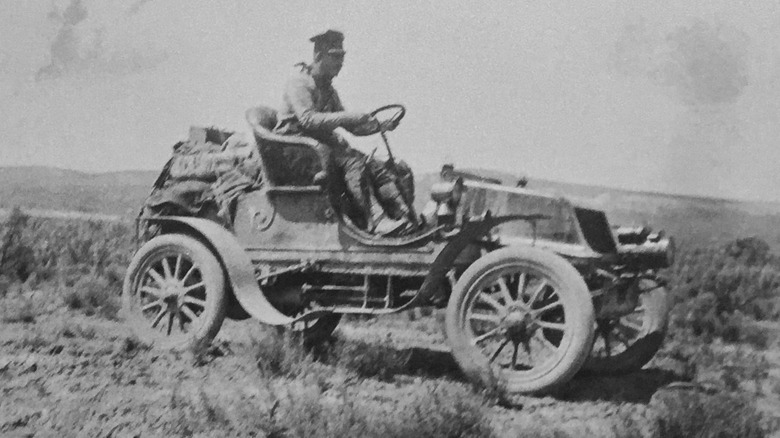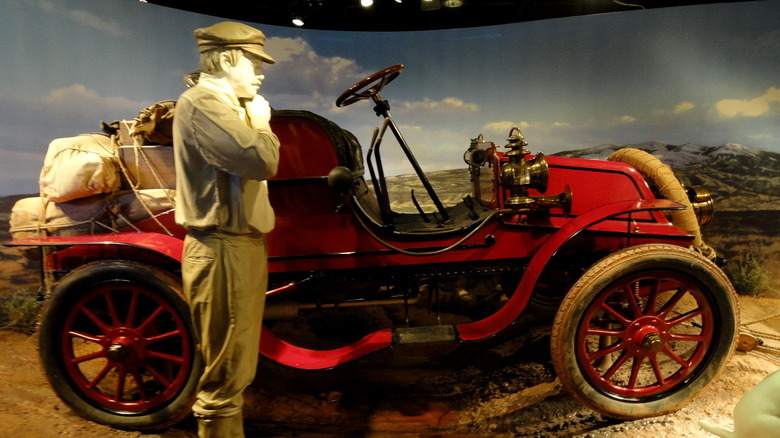The First Cross-Country Road Trip Came Earlier Than You Probably Think
The great American road trip has been featured in films as diverse as "Little Miss Sunshine," "Paul," and "Thelma and Louise." But long before cross-country drives became the subject of major motion pictures, the idea of driving a car from coast to coast was reserved for the most intrepid souls. In the early years of the 20th Century, there were no interstate highways, navigation apps, or iconic truck stops to make such a trip easy. In fact, most roads outside major cities were still unpaved, and maps for such a route were inadequate at best.
In 1901, Winton Motor Company founder Alexander Winton and reporter Chas. B. Shanks tried to drive from San Francisco to the East coast but were stymied when their car got stuck in the sand in the northern Nevada desert. Two years later, Vermont doctor Horatio Nelson Jackson was having drinks with his wife at the San Francisco University Club when the feasibility of a cross-country drive came up. Exactly how much alcohol was involved and whether it played a factor in the subsequent $50 bet has been lost to history, but Jackson left the bar intent on completing the trip in under 90 days and winning the wager. He enlisted the help of mechanic and bicycle racer Sewall Crocker, and purchased a secondhand Winton on Crocker's recommendation.
[Featured image by the University of Vermont via Wikimedia Commons|Cropped and scaled|Public Domain]
The trip ultimately took 63 1/2 days
Knowing of Winton and Shanks' misfortune, Jackson and Crocker left San Francisco on May 23, heading north through Oregon before turning east to cross Idaho. There, Jackson purchased a dog named Bud for $15, who was outfitted with goggles and joined the adventure. Nelson later commented that Bud was the only one of the three that made the entire trip without uttering a word of profanity. Their journey was slowed by bad directions given to them along the way, some perhaps by folks who wanted friends and family to see these fools for themselves. Flat tires and other breakdowns delayed them further, and a month into their trip two other drivers began their own cross-country journeys in pursuit of Jackson, Crocker, and Bud.
By mid-July, they had reached Nebraska, where the increased prevalence of paved roads allowed them to pick up their pace significantly. They reached New York City on July 26, 63 and a half days after departing San Francisco. This was well within the 90-day parameter of Jackson's wager, but Atlas Obscura claims he never collected his well-earned $50. Bud went on to live a happy and more peaceful life on the Jackson family farm in Vermont, and the car is now on display at the Smithsonian's Museum of American History. The epic road trip was also chronicled in a 2003 Ken Burns PBS documentary called "Horatio's Drive."
[Featured image by Daderot via Wikimedia Commons|Cropped and scaled|Public Domain]

